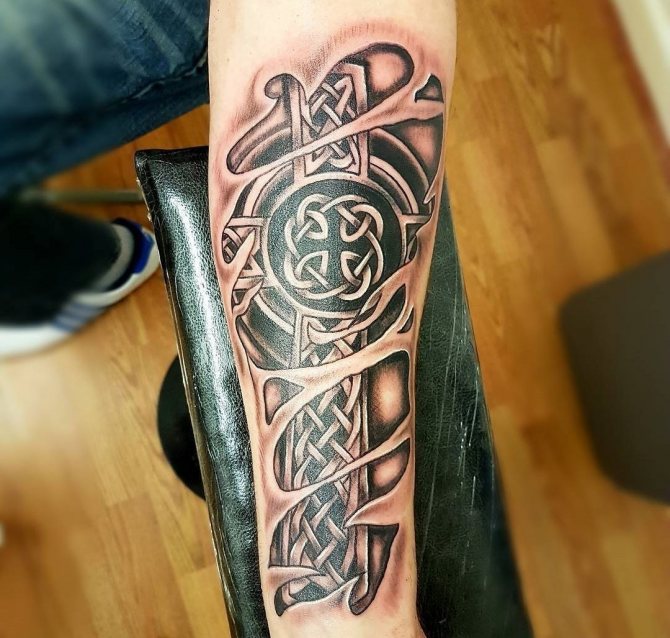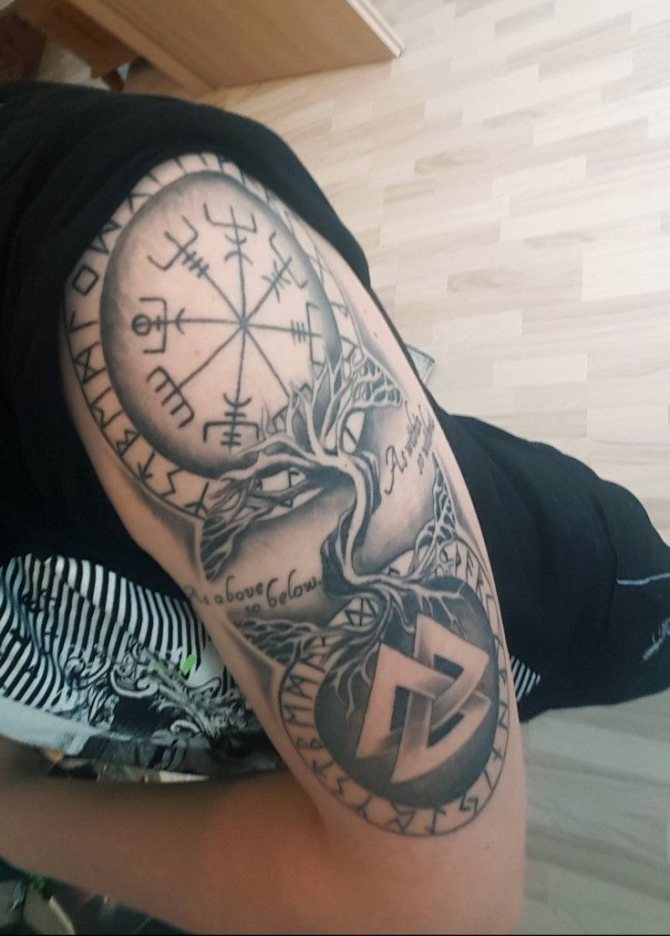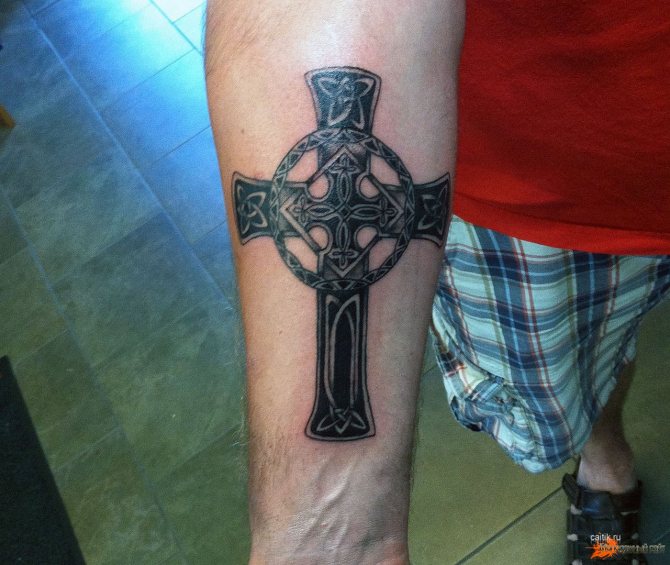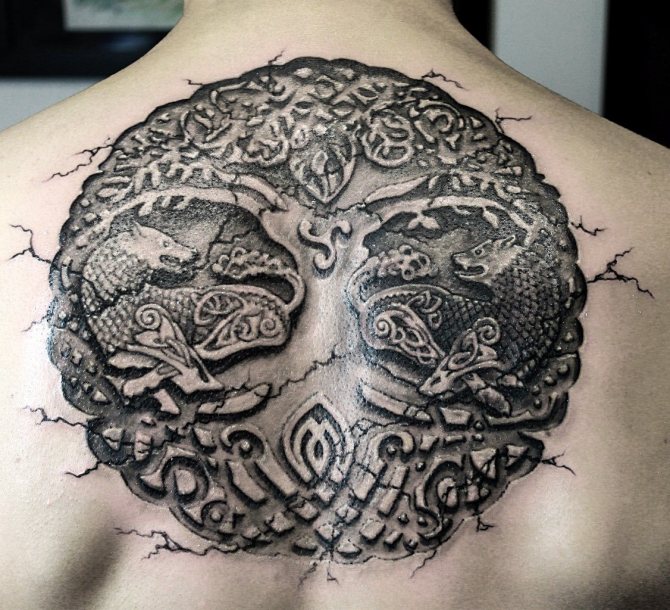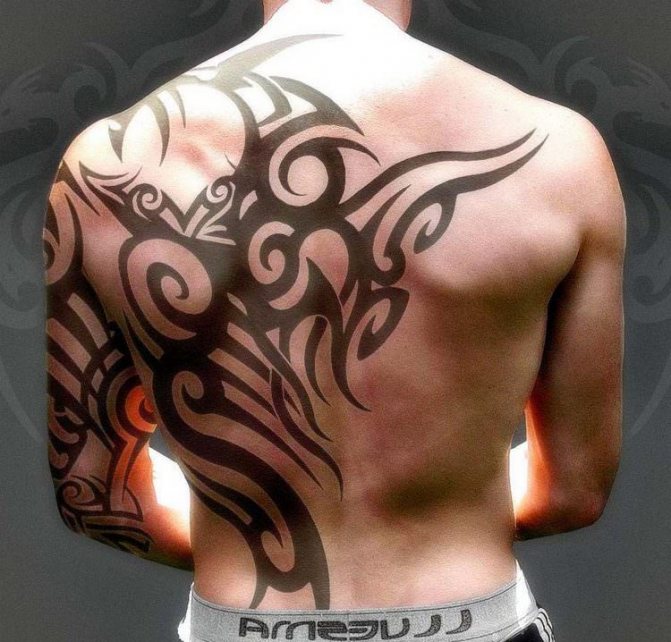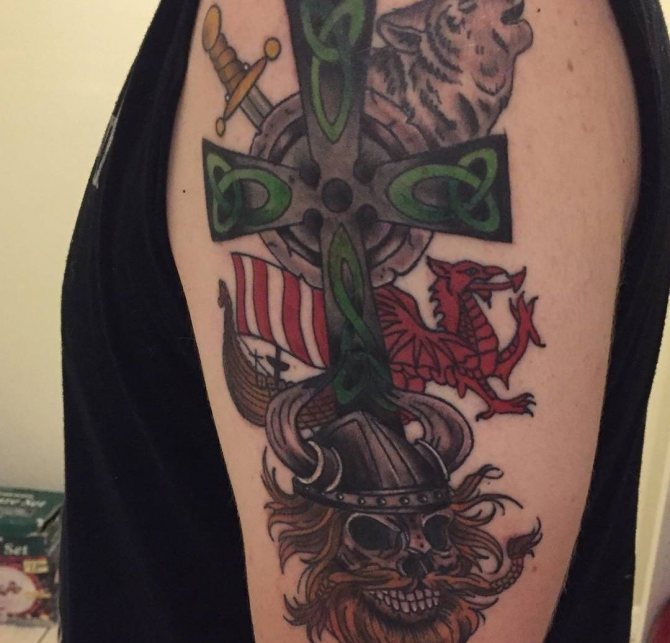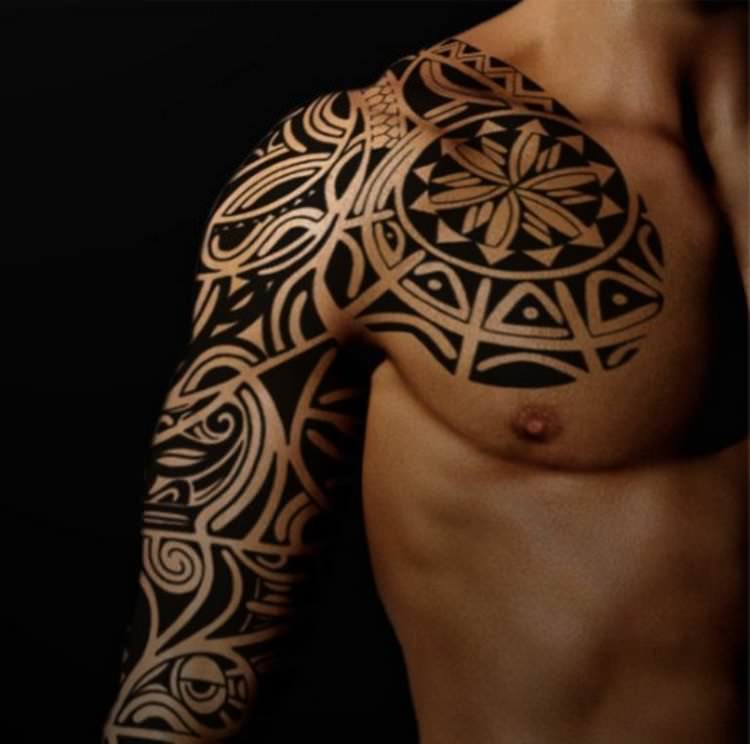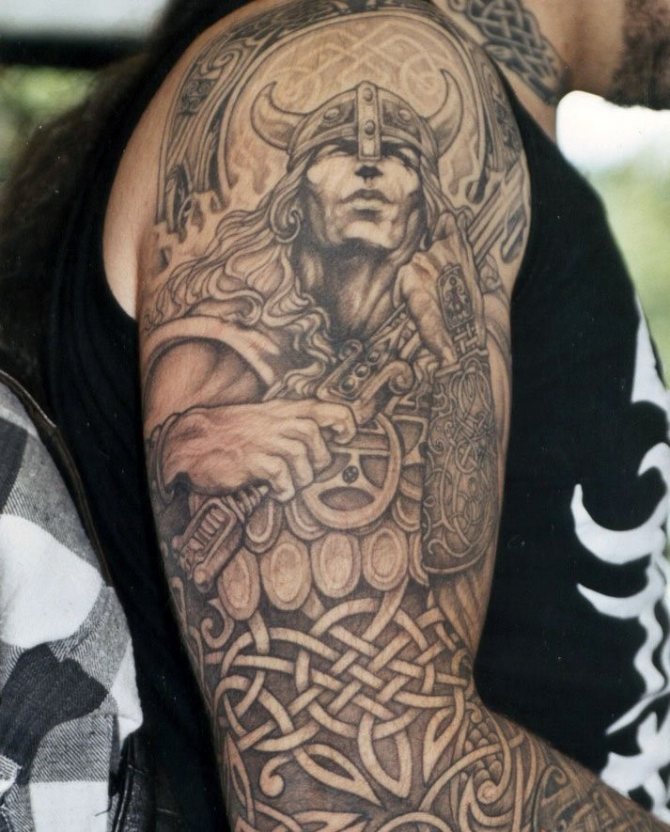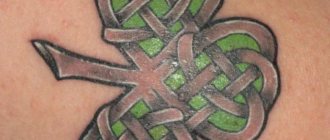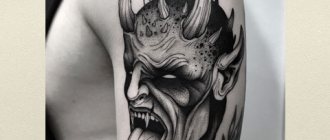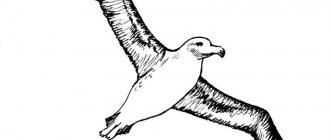The Celtic cross - a symbol quite popular and probably known to all. However, in tattoo culture it is not as popular as it may seem. The art of tattooing continues to actively develop, and with the emergence of new styles, interest in the old ones is gradually waning. Well, this is only to the advantage of those who are looking for a truly original image.
Today we will talk about the origins of this symbol, explain the meaning of the Celtic cross tattoo, talk about some non-traditional subjects and styles of performance.
History of origin
There are several versions of the origin of the symbol now called the Celtic Cross:
- The first version claims that the Celtic Cross was invented by Christian missionaries who carried their teachings to the wild tribes of the Celts. The Celtic missionaries themselves had already seen amulets with the image of the cross and gave the Celtic symbol Christian characteristics, because the cross itself, was one of the main symbols of the Christian religion.
- The Celts have long known about the cross, but they did not use it as a talisman. And only with the penetration of Christian teachings in their masses, the Celtic cross began to be endowed with lofty religious symbolism.
- The Celtic cross is a symbol of the cross of St. Patrick's. Proponents of this viewpoint believe that the Celtic cross did not exist at all, but that it emerged with the advent of the Christians. St. Patrick simply saw a circle that caught his eye and inscribed an image of a Christian crucifix into it.
- The prototype was the Egyptian ankh, from which came first the Coptic cross, and then, having undergone changes the Celtic cross itself.
- The Slavic nations have a cross, similar in appearance to the Celtic cross pattern. Both the Celtic and Slavic crosses had similar symbolic meanings.
- The cross worn on clothing by members of the Order of the Templars is also thought to have been borrowed precisely in an image derived from the Celtic cross, rather than the standard designation of the Christian crucifix, although one could argue about this for a long time.

Today, the image of the Celtic Cross is attributed several meanings:
- The cross in a circle symbolizes the world order, where masculinity and femininity are inextricably intertwined;
- Past and future are linked and connected by a circle symbolizing infinity;
- wisdom and harmony intersect and unite in a circle in the infinity of their manifestation in the reality of being;
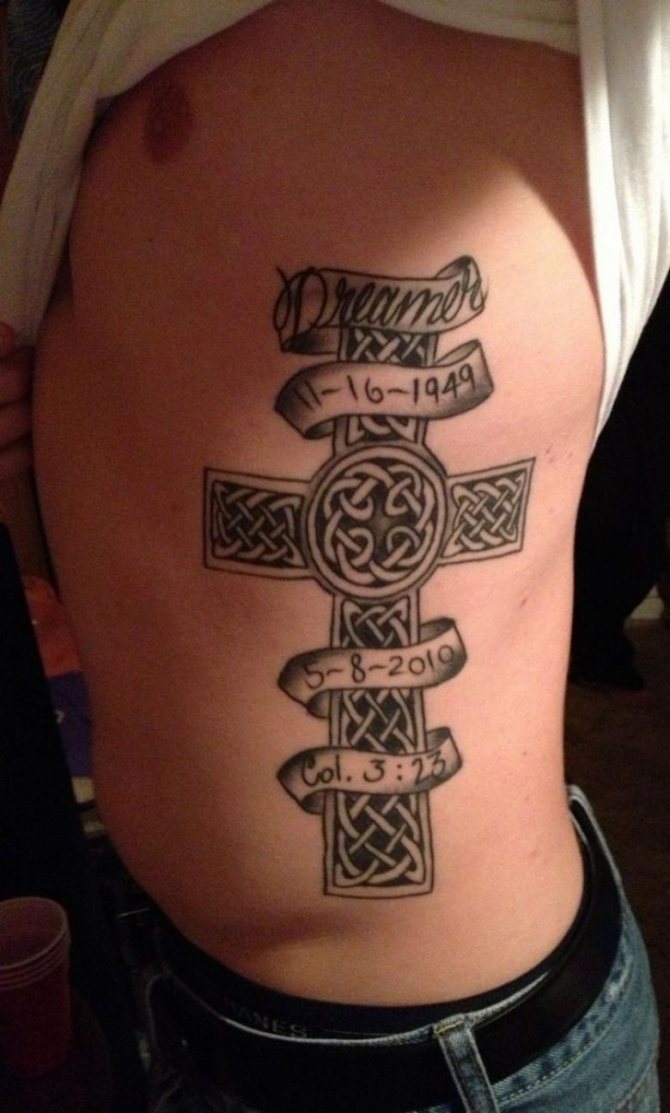

The tattoo itself has very contradictory meanings of its image. For proponents of one theory, the presence of the cross itself is perceived as a symbol of faith in the Creator. Others view it as belonging to a subculture. For example, a tattoo depicting a cross is often present in prison tattoos, and the Celtic cross is only an aspiration to protect oneself from belonging to the criminal world.
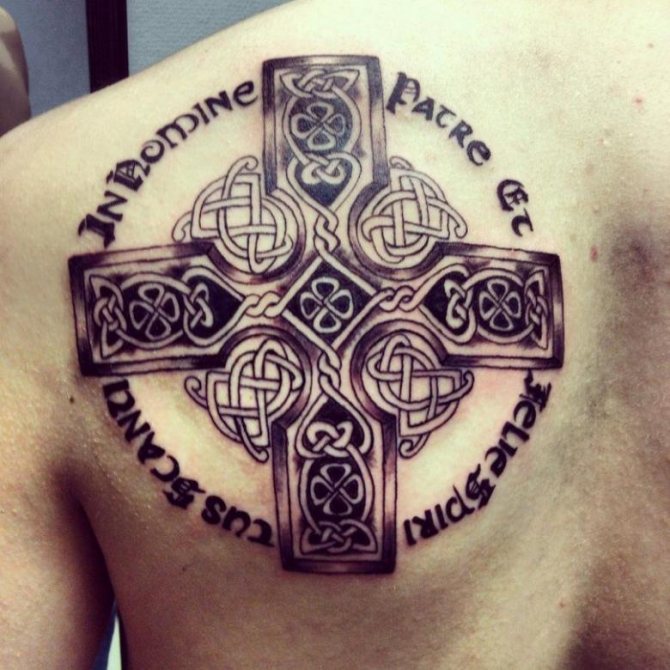

The threads that intertwine on the Celtic cross symbolize life itself, as they denote all things. The Celtic knot symbolizes the circle of light, which in ancient times was considered very important by the Celts, who prayed to it.


In addition, the Celtic cross can denote spiritual and bodily development, which are inextricably linked. Can also the meaning of the image be related to the characteristic performance, because it can denote both the seasons or the four sides of the world, as well as the unity of the four elements.


And the circle ties the four elements together. There is one feature of the tattoo depicting a cross - it will look quite harmoniously on any part of the body.
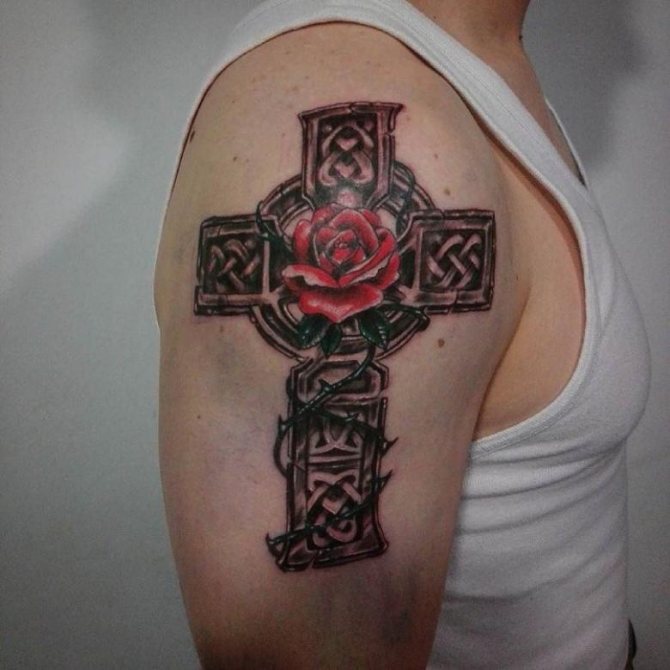

The meaning of the tattoo for men
Most often, such a tattoo choose to apply the already adult, established in the life of men. Hence it is clear that if such a tattoo is caused by a teenager, many he will be perceived not quite adequately.


As a person who has not yet managed to achieve anything definite in life, and already tries to emphasize his importance and success so specific tattoo. An adult man, however, is trying, rather, to express his coming to true faith, additionally evidenced by the quality of the performed tattoo.
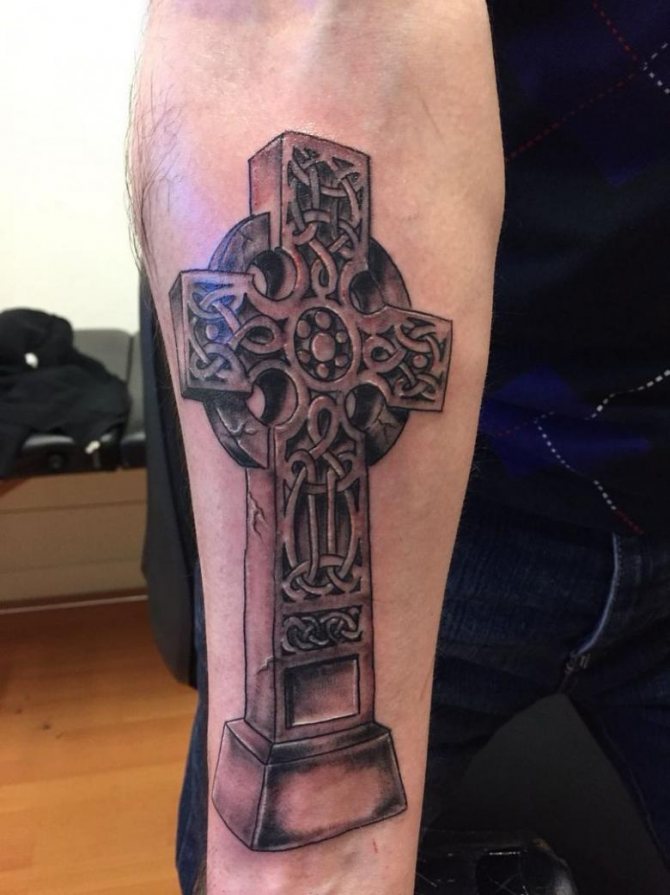

Inverted Cross Tattoo: What's the Meaning?
Inverted crucifixes on tattoos are not common. The sign depicted in this way is called "St. Peter". The servant was crucified head down, which was the reason for the further inversion of the symbol. It is used as a sign of anti-Christianity and Satanism. It is also found among heavy metal listeners.
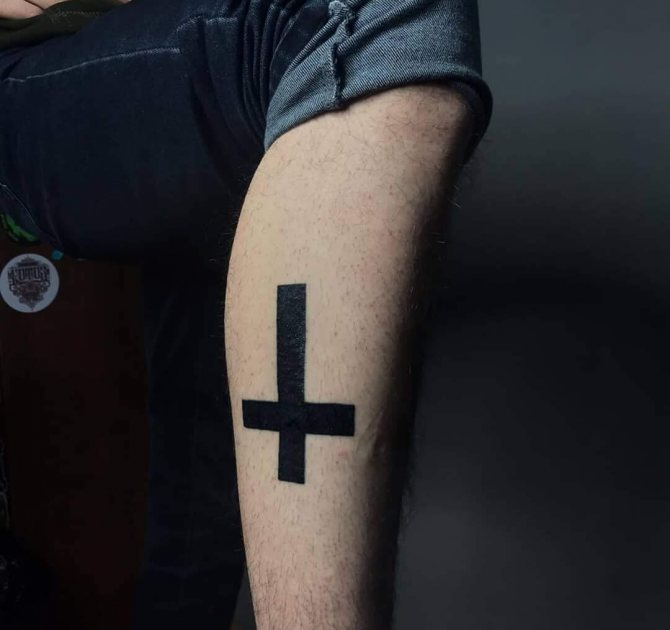

The meaning of the tattoo for women
If a girl has already decided firmly to apply exactly the Celtic Cross as a tattoo, she should think about the quality of the image, as the very clarity of the image of this cross should symbolize, above all, the sophistication of the female nature.
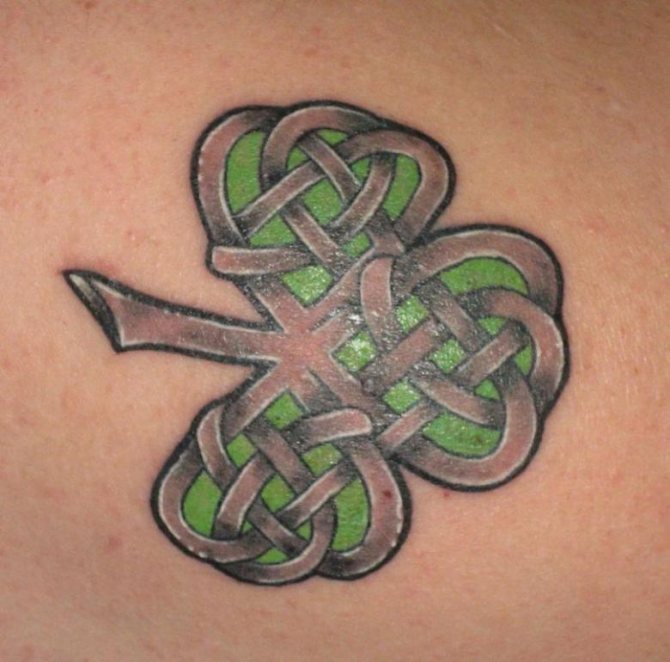

And in the "female" case of choosing such a tattoo, it can denote not only a special commitment to religion, but also standard feminine qualities such as femininity and refinement. And this in a tattoo can be expressed only by separate components and style of execution.


Who are the Celts?
The Celts (or as they were called by the ancient Romans - Gauls) were ancient tribes that inhabited the territory of modern Europe in the first millennium BC. As they mingled with the local tribes, the Celts assimilated, but also introduced elements of their own culture. Its main distinctive feature was ornamentation - vegetable, geometric, zoomorphic. These traditions of ornamentation were preserved and developed the longest in Ireland - during the first millennium AD.
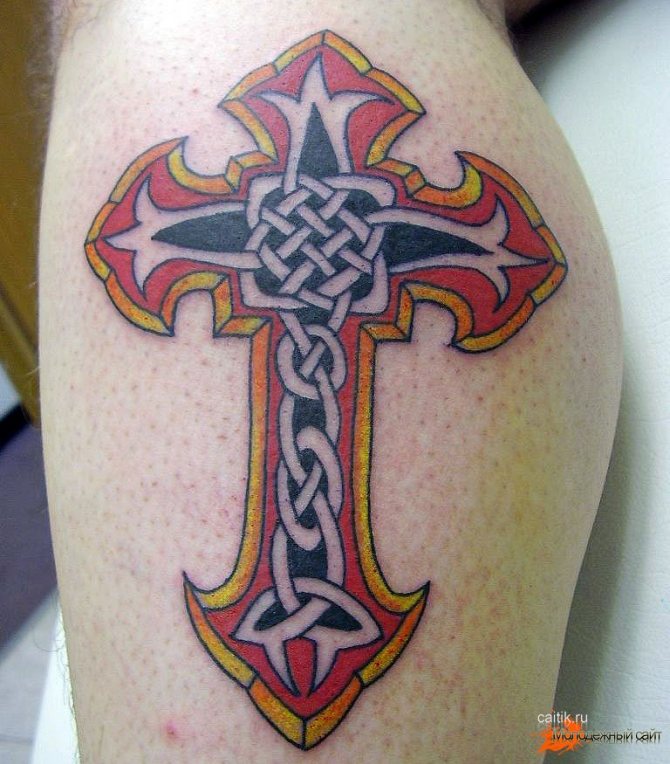

Celtic cross tattoo
In their ornaments, the Celts sought to pay homage and admiration to the complexity of nature and the interconnectedness of its individual elements. Often a Celtic pattern consists of a single line, forming intertwining and labyrinths with neither beginning nor end. It symbolizes the cycles of life and death, the change of seasons and eras.
The modern meaning of the tattoo
Today many people in whose life religion and faith is not the last place given to religion, is frankly afraid to apply a similar tattoo, because it is likely to become necessary to answer for its use to representatives of certain subcultures, including those for whom his imprint in life has left a stay in prison.
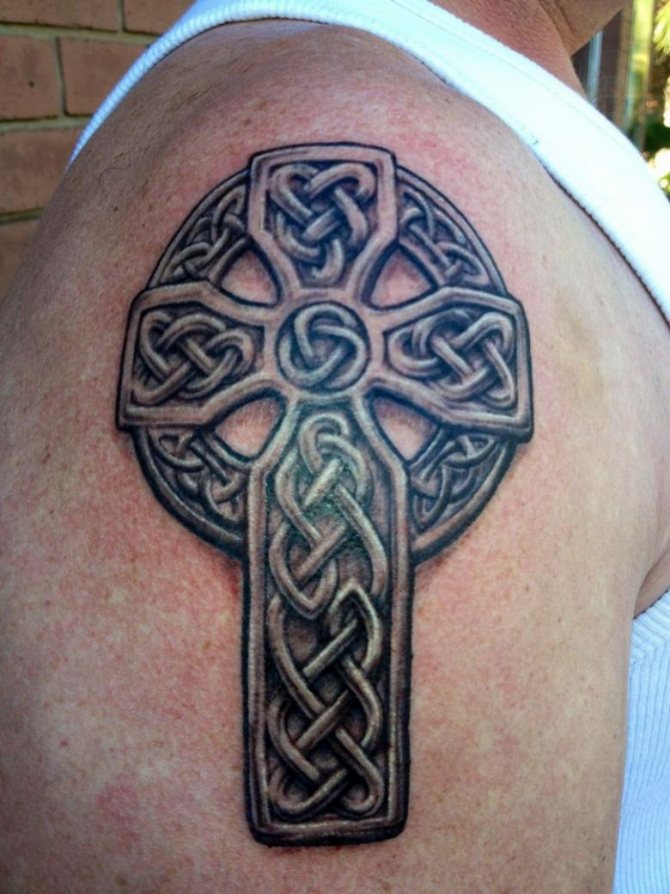

If the desire to wear a tattoo depicting a Celtic cross is almost obsessive, it is recommended to apply it either to the shoulder (where it is only possible the religious perception of such a tattoo) or to body parts that are hidden under clothing.
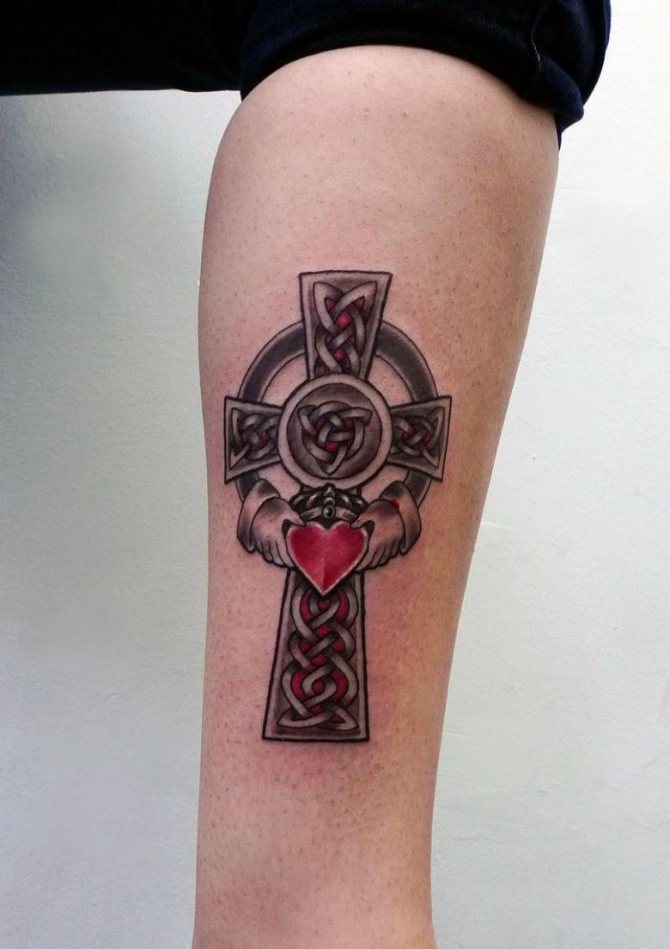

Although in this case is rather strange its application, because the tattoo, above all, is designed for its perception from the outside, and to put it where no one can not see it, it seems absolutely unreasonable, and therefore meaningless decision.
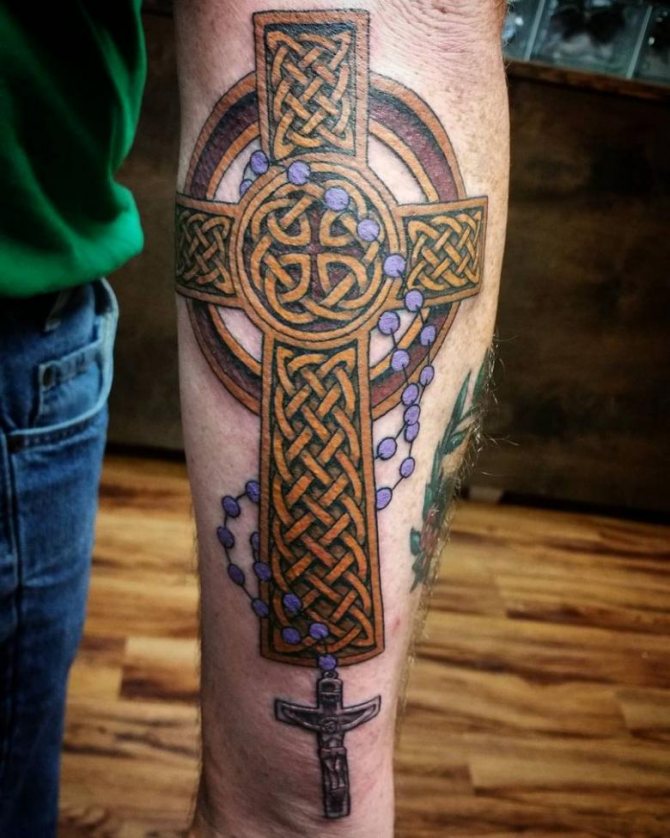

Where it is better to apply
The symbol of the Celtic cross is so related to religion that it definitely should not be applied to the lower parts of the body, as many will be perceived as an open display of disrespect for religion, its rejection of his heart and mind.
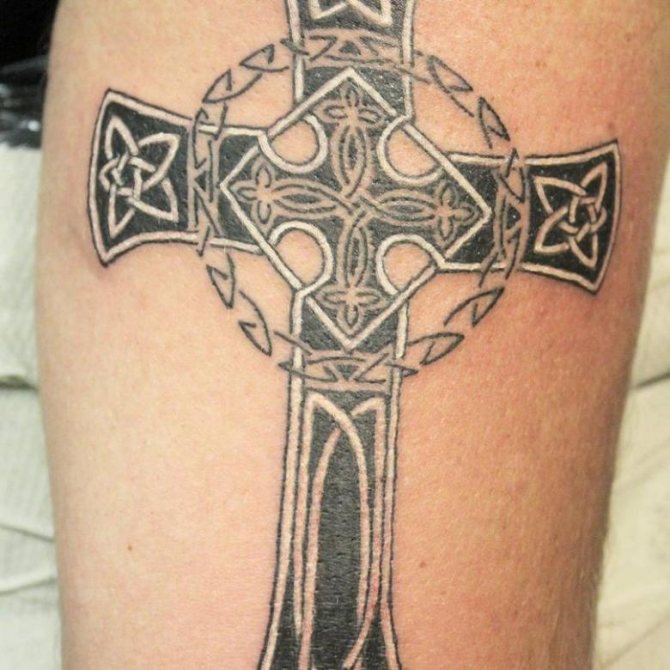

The neck tattoo, on the contrary, is recognized by everyone who understands even a little bit of symbolism as the most powerful amulet. It gives people an understanding of their place in life and guides them in choosing the right path. The Celtic cross in the heart area is of great symbolic value.
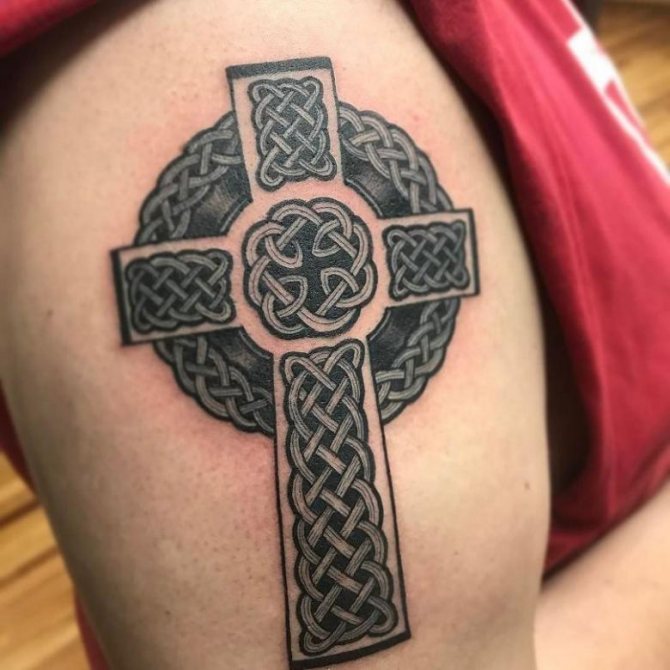

Religious people believe that faith lives in a person exactly in the heart, and does not need proof. In any case, the most popular role of the Celtic cross tattoo, as well as any other tattoo, is to hide any defects and minor scars.
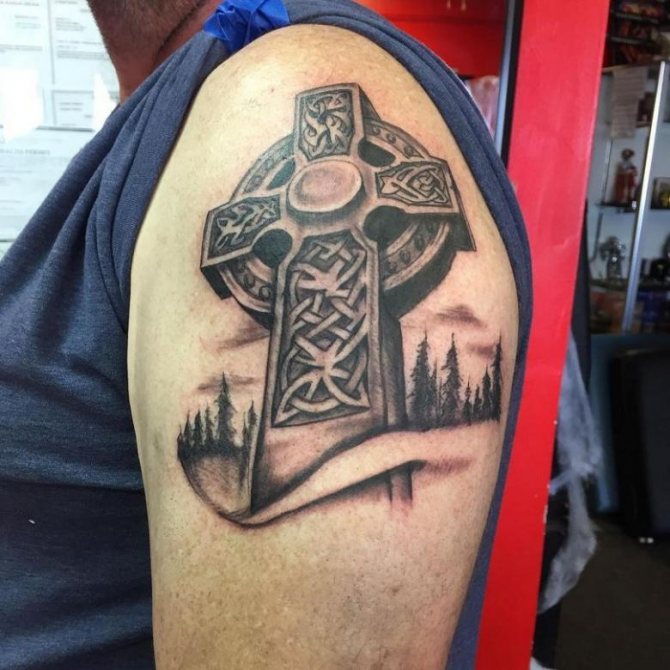

In what techniques is usually performed
The most popular combinations are Celtic tattoos in the techniques of dotwork, polynesia, tribal, blackwork and ornamental. Effectively look watercolor bright tattoos. When they are applied using several colored pigments. More often such tattoos are chosen by girls. When applying the colors, it is important not to lose the mystery and charm of Celtic interlacing.
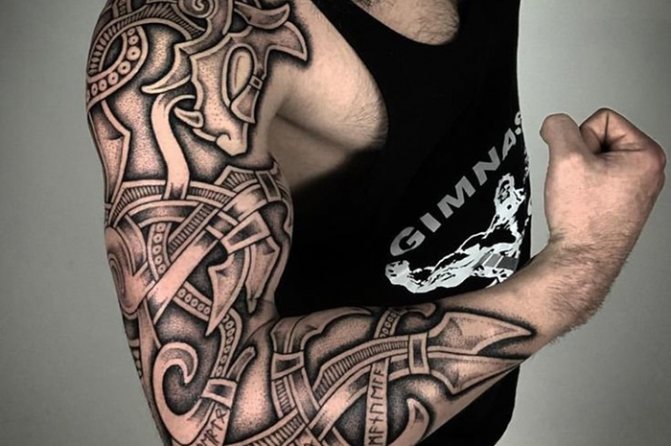

Tattoos are performed in the technique of dotwork.
To put a tattoo or do not
The future owner of a gorgeous image of a Celtic cross is important to answer the question of whether he really has a strong faith. After all, in most cases, the tattoo is applied for life.
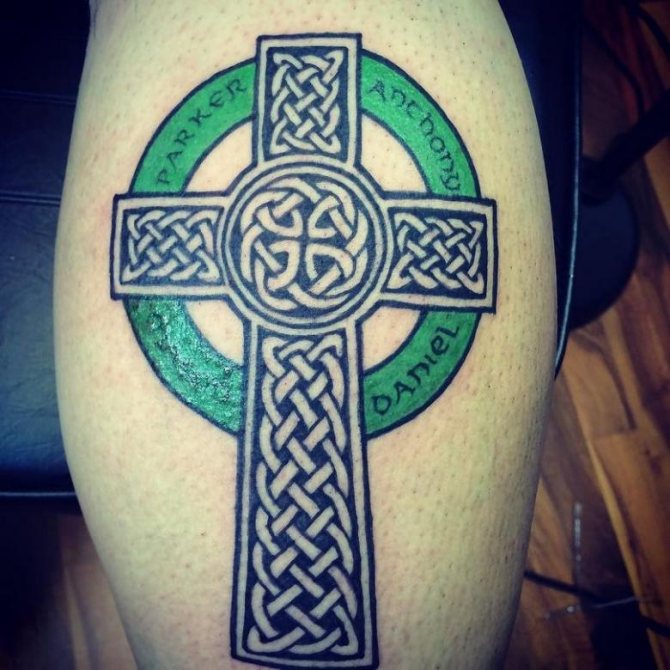

As opposed to adopting any principles from which, as time passes, one can fall back on. In modern life, the process of removing a tattoo is certainly possible, but there are still traces. So you can recommend when deciding to apply yourself so symbolic tattoo, before you make for yourself a decisive conclusion that it is really necessary.


